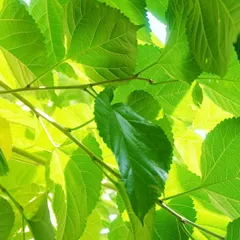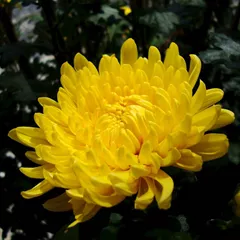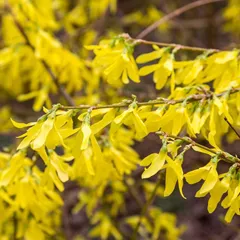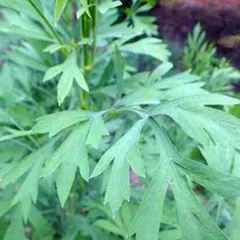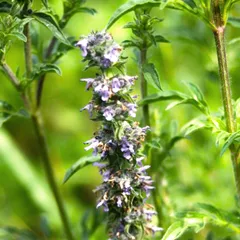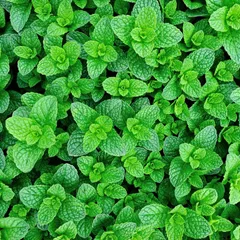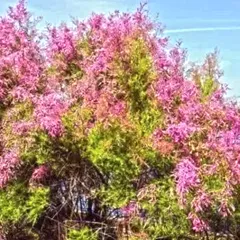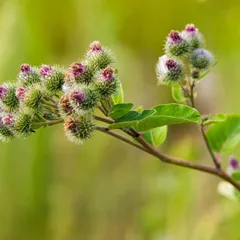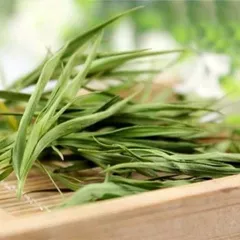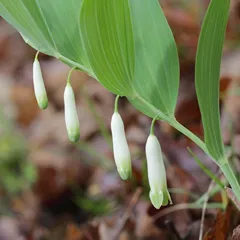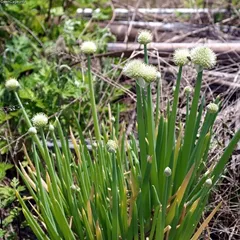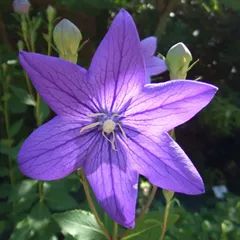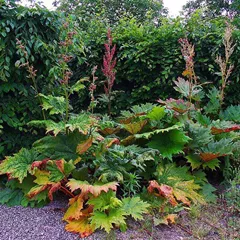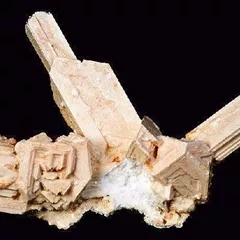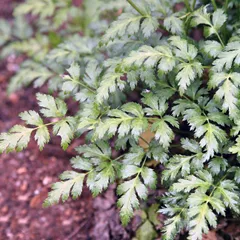Yin Qiao San
Yin Qiao San
Chinese: 银翘散
Pinyin: Yín Qiào Sàn
Other names: Honeysuckle and Forsythia Powder, Lonicera and Forsythia combination, Forsythia Lonicera Powder
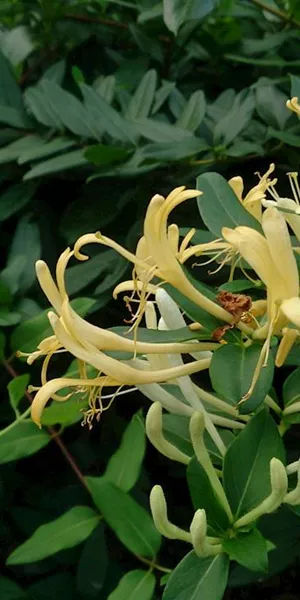
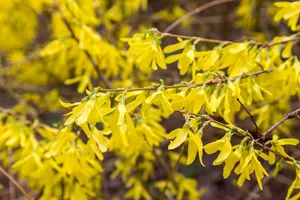
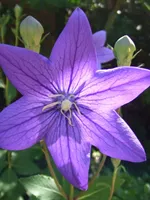
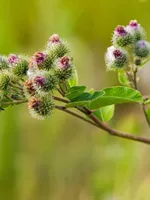




Yin Qiao San
Yin Qiao San
Chinese: 银翘散
Pinyin: Yín Qiào Sàn
Other names: Honeysuckle and Forsythia Powder, Lonicera and Forsythia combination, Forsythia Lonicera Powder
Number of ingredients: 10 herbs
Formula category: External formulas for External disorders
Conditions for which it may be prescribed: MumpsMeaslesInfluenza and six other conditions
- Disperses Wind Heat
- Clears Heat
- Resolves Toxicity
Contraindications: It is not very effective in treating Damp Heat.
Source date: 1798 AD
Source book: Systematic Differentiation of Warm Pathogen Diseases
The information provided here is not a replacement for a doctor. You shouldn't use it for the purpose of self-diagnosing or self-medicating but rather so you can have a more informed discussion with a professional TCM practitioner.
Yin Qiao San is a 10-ingredient Chinese Medicine formula with Honeysuckle Flowers (Jin Yin Hua) and Forsythia Fruits (Lian Qiao) as principal ingredients.
Invented in 1798 AD, it belongs to the category of external formulas for External disorders. Its main actions are: 1) disperses Wind Heat and 2) clears Heat.
In Chinese Medicine health conditions are thought to arise due to "disharmonies" in the body as a system. These disharmonies are called "patterns" and the very purpose of herbal formulas is to fight them in order to restore the body's harmony.
In this case Yin Qiao San is used by TCM practitioners to fight patterns like Wind-Heat invading the Lungs, Wind-Heat or Exterior-Heat. From a Western Medicine standpoint, such patterns can give rise to a range of conditions such as common cold, influenza or bronchitis for instance.
On this page, after a detailed description of each of the ten ingredients in Yin Qiao San, we review the patterns and conditions that Yin Qiao San helps treat.
The ten ingredients in Yin Qiao San
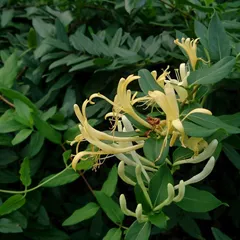
Jin Yin Hua is a king ingredient in Yin Qiao San. Like the name indicates, it means it has more power than other ingredients in the formula.
1. Honeysuckle Flowers (Jin Yin Hua)
Jin Yin Hua acrid, cool, and fragrant. It releases the Exterior, clear Heat from
the Lungs and resolve Toxicity.
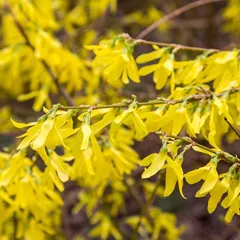
Lian Qiao is a king ingredient in Yin Qiao San. Like the name indicates, it means it has more power than other ingredients in the formula.
2. Forsythia Fruits (Lian Qiao)
Lian Qiao acrid, cool, and fragrant. It releases the Exterior, clear Heat from
the Lungs and resolve Toxicity.
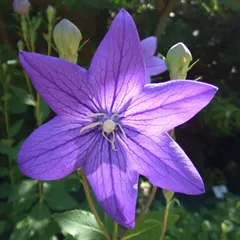
Jie Geng is a deputy ingredient in Yin Qiao San. This means it helps the king ingredient(s) treat the main pattern or it serves to treat a coexisting pattern.
3. Platycodon Roots (Jie Geng)
Jie Geng spreads the Lung Qi and improves the throat. Also, Liquorice and Platycoden together are very strong in treating sore throat.
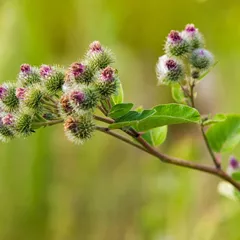
Niu Bang Zi is a deputy ingredient in Yin Qiao San. This means it helps the king ingredient(s) treat the main pattern or it serves to treat a coexisting pattern.
4. Greater Burdock Fruits (Niu Bang Zi)
In general Niu Bang Zi's main actions are as follows: "Relieves the Exterior and disperses Heat. Allows the release of toxicity from the surface and clears Heat. Reduces swelling and clears pathogenic Heat. Lubricates the Intestines. Relieves sore throat."
In the context of Yin Qiao San, it is used because it spreads the Lung Qi and improves the throat.
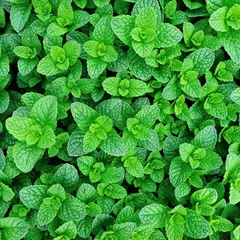
Bo He is a deputy ingredient in Yin Qiao San. This means it helps the king ingredient(s) treat the main pattern or it serves to treat a coexisting pattern.
5. Wild Mint (Bo He)
In general Bo He's main actions are as follows: "Relieves the Exterior and disperses Wind-Heat. Clears Wind-Heat from the head, eyes and throat. Allows the release of toxins from the skin. Moves Stagnant Liver Qi"
In the context of Yin Qiao San, it is used because it helps the key herbs to release exterior Heat.
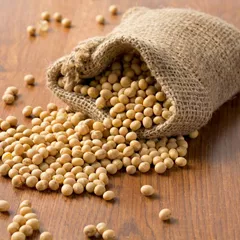
Dan Dou Chi is an assistant ingredient in Yin Qiao San. This means that it either serves to reinforces the effect of other ingredients or it moderates their toxicity.
6. Fermented Soybeans (Dan Dou Chi)
Part used: Fermented preparation obtain from the ripe bean
Nature: Cool
In general Dan Dou Chi's main actions are as follows: "Relieves the Exterior and scatters Wind, Cold and Heat, especially when there is Yin Deficiency. Relieves stuffy sensation in the chest and irritability."
In the context of Yin Qiao San, it is used because it helps the key herbs to release exterior Heat.
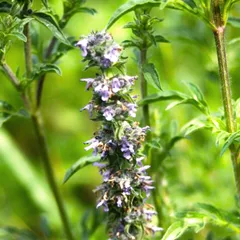
Jing Jie is an assistant ingredient in Yin Qiao San. This means that it either serves to reinforces the effect of other ingredients or it moderates their toxicity.
7. Japanese Catnip (Jing Jie)
Part used: Aerial portion and flowers, or the spikes only (in which case it is called Jing Jie Sui)
Nature: Neutral
Taste(s): Pungent
In general Jing Jie's main actions are as follows: "Relieves the Exterior and disperses Cold or Heat depending on the other herbs used. Releases the Exterior for measles. Stops bleeding. Abates swellings."
In the context of Yin Qiao San, it is used because it is warm and acrid. It encourages Exterior releasing without causing Dryness.
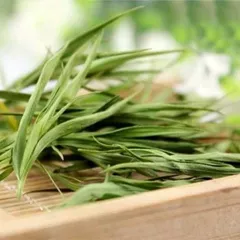
Dan Zhu Ye is an assistant ingredient in Yin Qiao San. This means that it either serves to reinforces the effect of other ingredients or it moderates their toxicity.
8. Lophatherum Herbs (Dan Zhu Ye)
Part used: Dried stem and leaf
Nature: Cold
Taste(s): Sweet
Meridian affinity: HeartSmall intestineStomach
Category: Herbs that clear Heat and purge Fire and/or clear Summer Heat
In general Dan Zhu Ye's main actions are as follows: "Clears Heat and aids thirst. Aids urination and drains Damp-Heat."
In the context of Yin Qiao San, it is used because it creates Body Fluids and alleviates thirst.

Lu Gen is an assistant ingredient in Yin Qiao San. This means that it either serves to reinforces the effect of other ingredients or it moderates their toxicity.
9. Common Reed Rhizomes (Lu Gen)
Part used: Fresh or dried rhizome
Nature: Cold
Taste(s): Sweet
Meridian affinity: LungStomach
Category: Herbs that clear Heat and purge Fire and/or clear Summer Heat
In general Lu Gen's main actions are as follows: "Clears Heat and promotes the generation of Fluids. Dispels Lung Heat. Dispels Stomach Heat. Promotes urination and clears Heat in the urinary tract. Calm the minds and stop vomiting."
In the context of Yin Qiao San, it is used because it creates Body Fluids and alleviates thirst.
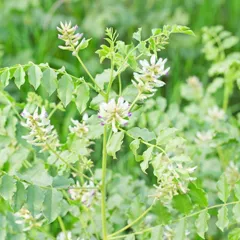
Gan Cao is an assistant ingredient in Yin Qiao San. This means that it either serves to reinforces the effect of other ingredients or it moderates their toxicity.
10. Liquorice (Gan Cao)
Part used: Dried root and rhizome
Nature: Neutral
Taste(s): Sweet
Meridian affinity: HeartLungSpleenStomach
Category: Tonic herbs for Qi Deficiency
Gan Cao creates Body Fluids and alleviates thirst. Also, Liquorice and Platycoden together are very strong in treating sore throat.
Conditions and patterns for which Yin Qiao San may be prescribed
It's important to remember that herbal formulas are meant to treat patterns, not "diseases" as understood in Western Medicine. According to Chinese Medicine patterns, which are disruptions to the body as a system, are the underlying root cause for diseases and conditions.
As such Yin Qiao San is used by TCM practitioners to treat four different patterns which we describe below.
But before we delve into these patterns here is an overview of the Western conditions they're commonly associated with:
Common cold Influenza Bronchitis Pneumonia Tonsillitis Measles Mumps Meningitis Encephalitis B
Again it wouldn't be correct to say "Yin Qiao San treats common cold" for instance. Rather, Yin Qiao San is used to treat patterns that are sometimes the root cause behind common cold.
Now let's look at the four patterns commonly treated with Yin Qiao San.
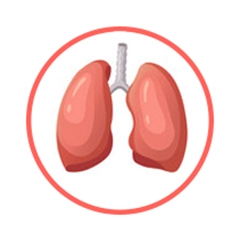
The Lungs is a so-called "Zang" Organ. Learn more about the Lungs in Chinese Medicine
Wind-Heat invading the Lungs
Pulse type(s): Rapid (Shu), Floating (Fu)
Symptoms: Fever Thirst Coughing Sneezing Headaches Runny nose Body aches Dark Urine Sore throat Blocked nose Slight chills Swollen tonsils Aversion to cold Coughing of copious thick yellow sputum
Yin Qiao San is sometimes prescribed by TCM practitioners to treat Wind-Heat invading the Lungs. This pattern leads to symptoms such as aversion to cold, fever, coughing and sore throat. Patients with Wind-Heat invading the Lungs typically exhibit rapid (Shu) or floating (Fu) pulses.
It is very similar to the pattern of Wind-Cold invading the Lungs, but this Wind is rather associated with Heat instead of Cold. Therefore, patients are more likely to have fever.
Like the Wind-Cold invasion pattern, patients have symptoms like aversion to cold, because the body's Defensive Qi... read more about Wind-Heat invading the Lungs

'Heat' as a body pattern in Chinese Medicine is one of the so-called "Eight Principles". Learn more about Heat pattern in Chinese Medicine
Wind-Heat
Pulse type(s): Rapid (Shu), Floating (Fu)
Symptoms: Fever Chills Thirst Sneezing Coughing Sweating Headaches Runny nose Sore throat Yellow mucus Fear of wind Blocked nose Itchy throat Swollen tonsils Aversion to cold Occipital stiffness Occipital headaches
Yin Qiao San is sometimes prescribed by TCM practitioners to treat Wind-Heat. This pattern leads to symptoms such as aversion to cold, fever, sneezing and coughing. Patients with Wind-Heat typically exhibit rapid (Shu) or floating (Fu) pulses.
Within the Four-Levels theory, Wind-Heat is the first level of invasion of External Pathogens, when it still resides in the body's Exterior.
This pattern is similar to Wind-Cold, but the Wind is together with Heat rather than Cold. The common symptoms are aversion to cold, sneezing, coughing, runny... read more about Wind-Heat

The Exterior in Chinese Medicine is one of the so-called "Eight Principles". Learn more about Exterior in Chinese Medicine
Exterior-Heat
Pulse type(s): Rapid (Shu), Floating (Fu)
Symptoms: Fever Thirst Sweating Headaches Body aches Stiff neck Aversion to cold
Yin Qiao San is sometimes prescribed by TCM practitioners to treat Exterior-Heat. This pattern leads to symptoms such as aversion to cold, fever, sweating and thirst. Patients with Exterior-Heat typically exhibit rapid (Shu) or floating (Fu) pulses.
This pattern is classified as ‘Exterior’ not because it derived from an external pathogenic factor but because its manifestations are located in the ‘Exterior’ of the body such as the skin, muscles and Channels.
The Defensive Qi reacts to the external Heat Evil and the battle between the two gives... read more about Exterior-Heat

'Heat' as a body pattern in Chinese Medicine is one of the so-called "Eight Principles". Learn more about Heat pattern in Chinese Medicine
Toxic-Heat
Pulse type(s): Rapid (Shu)
Tongue coating: Yellow coating
Tongue color: Red
Symptoms: Pus Fever Boils Sores Eczema Thirst Pustule Coughing Erythema Swellings Carbuncles Dark Urine Sore throat Mouth ulcers Constipation Abdominal pain Swollen tonsils Feeling of heat Lower back pain Perineum swollen Prostate swollen Testicle swollen Red skin eruptions Shortness of breath Yellow vaginal discharge Smelly Vaginal discharge Sticky vaginal discharge Bloody vaginal discharge Five colour vaginal discharge
Yin Qiao San is sometimes prescribed by TCM practitioners to treat Toxic-Heat. This pattern leads to symptoms such as fever, swellings, pus and boils. Patients with Toxic-Heat typically exhibit rapid (Shu) pulses as well as Red tongue with yellow coating.
There are two types of Toxic-Heat. One type is called Toxic-Heat Stagnation, which mainly happens in Channels or other surfaces like skins, throat, lymph or mouth. The symptoms include pain, redness and swollen in throat as well as skin pustule and rush. Acne during teenage time is mainly due to... read more about Toxic-Heat
Formulas similar to Yin Qiao San
Sang Ju Yin is 50% similar to Yin Qiao San
Qing Xin Li Ge Tang is 46% similar to Yin Qiao San
Zhu Ye Cheng Liu Tang is 45% similar to Yin Qiao San
Jia Jian Wei Rui Tang is 40% similar to Yin Qiao San
Liang Ge San is 40% similar to Yin Qiao San
Pu Ji Xiao Du Yin is 36% similar to Yin Qiao San

